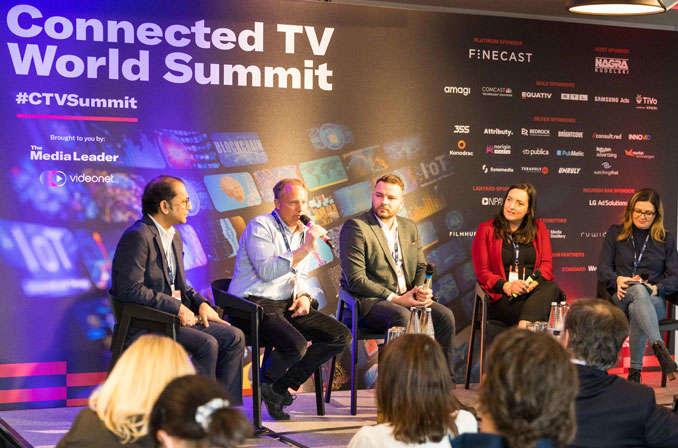Consumers have never had so much choice when it comes to streaming services – from the global giants Netflix, Amazon and Apple to smaller, more local or niche providers. But as the rising cost of living sees subscription numbers squeezed, how can these services continue to grow and increase their market share? This was the question posed to a panel of industry experts at Connected TV World Summit two weeks ago in London.
According to Jonas Engwall, CEO of Bedrock (which provides video streaming platforms to broadcasters and media companies in Europe), the answer is simple. “Content is still king in the streaming world. But the platform is queen.”
He continued that while there are exceptions, “If you look at the global streamers, they are well ahead of the local players. They are quite advanced in their content offering, massively pushing content with the platforms. And I think from a platform perspective, they’re also very advanced. They provide very personalised platforms, they’re stable, they work well.”
Ivars Lubāns, Head of Product at Go3, a local streaming provider in the Baltics (and part of TV3 Group), pointed out that the key to growth for this service was providing variety and locally-focussed content. “Regarding the Baltics, it’s a small market and Netflix is probably not that interested [in providing local content], as it’s three separate countries, three separate languages. So, we have the local knowledge and the local understanding and relevance, which is especially important for the 25+ [demographic] market.”
This was echoed by Anita Barnard, Head of Distribution and Commercial Partnerships at Marquee TV, which offers ballet theatre and opera, and whose service focuses on “content from places where people cannot or cannot afford to go to, such as the Sydney Opera House”. However, Engwall asserted that, “Local players are great at storytelling. But the challenge is to bring that content on a platform that can compete with the big players.”
The panel agreed that consolidation and partnerships could be a key differentiator for driving growth in D2C platforms. But more than that, without consolidation the CTV landscape will become too fractured for consumers. “Consolidation is the future,” said Parul Goel, Territory Head UK and Director Finance, UK/EU/Americas at ZEE Entertainment. “It’s got to happen because there is so much leaking of money everywhere. And we have to stop it to grow our industry. Otherwise, there will be hundreds of channels people won’t watch.”
Marquee TV works with local and global providers to bring its content to wider audiences and provide a better viewing experience, and Barnard sees a customer experience opportunity in this marketplace. “From a consumer point of view, there’s so many different subscriptions in their life and they just want to manage that in one place. Consolidation doesn’t have to be companies buying companies, but it needs cooperation to find an easier way for consumers to manage their subscriptions.”
Lubāns agreed on the need to evolve the CX. “[For consumers] one part is the money and the other is the experience. If you have to switch between providers to watch different content, it’s inconvenient. Some kind of aggregation has to happen within the industry.”
With the current economic situation, it can be hard to justify the investments needed to grow – and the days of growth at all costs may be coming to an end. “For global players it’s a land grab race. They are creating lots of content, but at some point they will have to stabilise to make a profit,” asserted Engwall. From Goel’s point of view, “Cost control in terms of content is the quickest way to get profit.”
With a plethora of ways to monetise content – whether using AVOD, FAST or SVOD – D2C providers should not be afraid to experiment with different strategies. As Engwall explained, “Nowadays, technology allows you to have a broader monetisation strategy; I think it’s up to everyone to try and see how it ends up … Spotify has shown in music that people will pay eventually to get a better experience. I think we’re heading in that direction.”
Ultimately, the panel decided, the key to growth in this sector is putting user experience first. “We want viewers to have a good experience on the bigger screens. Those who do watch via those bigger screens tend to stay longer,” Barnard observed. Lubāns concluded: “Going forward, I think the industry will focus not on the quantity, but on the quality of the content.”
The panel was moderated by Lydia Fairfax, Founder & MD at Triple Crown Consulting.


